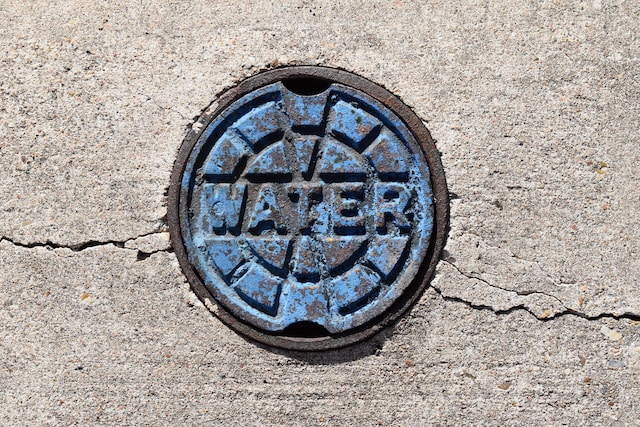Whether it happened due to a missed payment or a misunderstanding with your insurance provider, discovering that your home insurance has lapsed can be a nerve-wracking experience. But don’t panic—we’ll explore what a home insurance lapse means, why it happens, and, most importantly, how to get your coverage back on track.
A lapse in homeowners insurance is when your policy becomes inactive or is canceled, leaving your home uninsured. This can expose you to significant financial risk should your home be damaged or destroyed during this period. So, act promptly to reinstate coverage and protect your home.
Understanding the reasons for a home insurance lapse
The first question you must answer when your home insurance lapses is, “Why?” The underlying causes of the lapse are key to finding a solution and preventing a similar situation from occurring in the future.
Non-payment of premiums
The most common reason for home insurance lapses is non-payment of premiums. This can occur due to a variety of reasons.
- Oversight: It’s easy to lose track of due dates. If your insurance payment slipped your mind or got buried in other bills, your policy could lapse.
- Financial difficulties: Unanticipated financial challenges can lead to missed insurance payments. If you’re dealing with a job loss, medical emergency, or other financial hardship, the cost of insurance premiums might become untenable, leading to a lapse.
- Banking errors: Sometimes, lapses are not due to the policyholder’s actions but a banking error. This could be as simple as a changed bank account or an expired credit card that wasn’t updated with the insurer.
In cases of non-payment, communication with your insurer is key. Many insurers are willing to work with policyholders facing temporary financial hardships or honest mistakes. They may provide grace periods, payment plans, or other accommodations to help keep your coverage active.
Increased risk or repeated claims
Sometimes, an insurer may choose not to renew a policy due to increased risk or frequent claims. Here are a few scenarios where this might occur:
- Multiple claims: If you’ve filed multiple claims in a short time period, the insurer may perceive you as a high-risk customer. This is especially true for large claims or those related to avoidable or preventable incidents.
- Risk increase: The risk associated with insuring your home has increased significantly—say, you’ve acquired a breed of dog considered high-risk by the insurer, or you’ve installed a swimming pool without proper safety measures—making the insurer possibly not renew your policy.
- Property condition: The insurer might view the property as too high-risk to insure if it is in poor condition or has not been maintained.
Taking action to reinstate home insurance
Once you’ve identified the reason for the lapse and assessed your current insurance situation, it’s time to take action to reinstate your home insurance.
Contacting your previous insurer
The first action should be contacting your previous home insurance policyholder to discuss possibly reinstating your policy. Do this as soon as possible, especially if you’re within the grace period defined by your policy, as it can potentially avoid a complete lapse in coverage.
When contacting your insurer, be prepared to provide any required information or documentation. This could include proof of address, proof of property ownership, or evidence of repaired damage if your policy lapsed due to high-risk conditions.
Your insurer may also have specific conditions for reinstatement based on why the policy lapsed. For instance, if the lapse was due to non-payment, you would likely need to pay the overdue premium, along with a late fee. If your policy was canceled due to repeated claims or increased risk, you might need to show that you’ve taken steps to mitigate that risk before your policy can be reinstated.
Remember that while many insurance companies allow policy reinstatement after a lapse, it’s not guaranteed. The decision ultimately depends on the insurer’s rules and the specific circumstances of your lapse.
Exploring other insurance providers
If reinstatement with your previous insurer isn’t possible or desirable, your next step should be exploring alternative insurance providers. This might also be a good option if your previous insurer increases your rates substantially after a lapse.
When looking for a new home insurance provider, gather and compare quotes from multiple insurers to understand the market and help you find the best coverage at the most affordable rate.
As you compare quotes, look beyond the premium amounts. Consider each insurer’s coverage options—are they comprehensive enough to adequately protect your home? Also, pay attention to policy terms and conditions, including deductible amounts, coverage limits, exclusions, and the process for filing claims.
Finally, consider each insurer’s reputation for customer service. The ability to communicate effectively with your insurer and receive prompt, helpful service when needed is just as important as your policy’s cost and coverage details.
Rebuilding insurance history and improving future coverage
Once you have secured coverage again after a lapse, you must ensure that this coverage remains consistent and uninterrupted, which involves rebuilding your insurance history and taking steps to improve future coverage.
Preventing future lapses with organized payment
One of the most effective ways to prevent future lapses is to set up automatic payments for your premiums. It removes the possibility of human error or forgetfulness from the equation.
If automatic payments are not an option, consider setting up calendar reminders around the due dates for your premiums. Most digital calendars can send notifications for upcoming events so that you won’t miss a payment.
Maintaining open communication with your insurer
Open communication with your insurance provider can help you stay abreast of any changes affecting your policy. Inform your insurer about significant changes to your home or lifestyle that could affect your coverage needs or risk level. This includes home renovations, adding or removing safety features, getting a pet, or changing the number of people living in your home.
In addition to keeping your insurer updated, it’s also wise to periodically review your policy and discuss it with your insurance agent. They can explain any aspects of the policy you don’t understand and suggest adjustments that might benefit you.
Rebuilding your insurance history
Once you’ve reestablished coverage and organized your payments, it’s time to rebuild your insurance history. Demonstrating stability and reliability can positively impact your insurance premiums and the ease of obtaining coverage in the future.
Stay with the same insurance provider for an extended period. Insurers value loyalty and may offer discounts or other benefits to long-term customers.
Strive to maintain a claim-free record. While insurance is there for you to use when you need it, a history of frequent or costly claims can make you seem like a high-risk customer to insurers. On the other hand, if you can show that you’re proactive about preventing damage and avoiding claims, insurers will likely reward you with lower premiums.
Experiencing a lapse in homeowners insurance can be stressful, but it’s a situation that can be resolved with prompt attention and action. You can navigate this challenge by understanding why the lapse occurred, assessing your current insurance situation, exploring reinstatement options, addressing coverage gaps, and taking steps to prevent future lapses.
And remember, even if your coverage has lapsed, there are always options to secure coverage again. The important thing is to act quickly to protect your home, belongings, and financial security.




